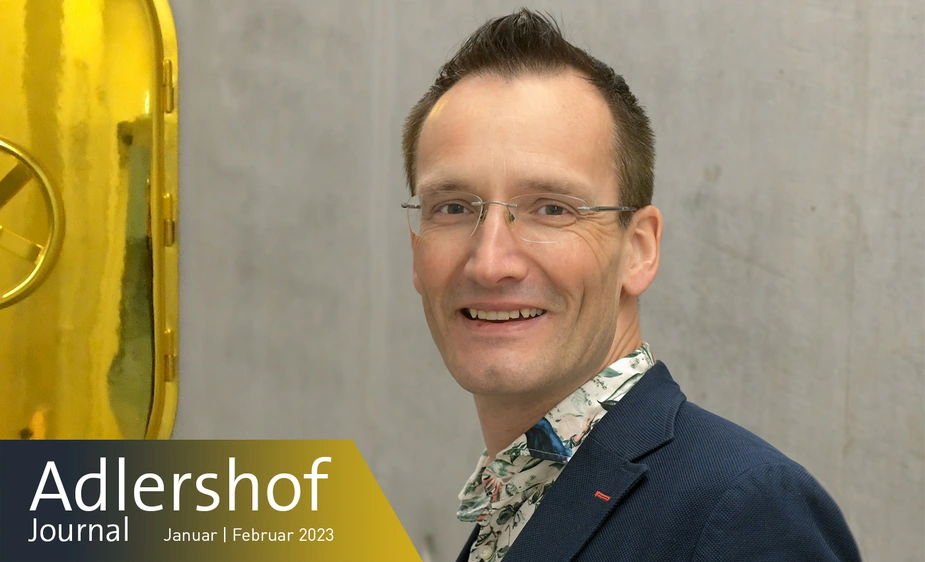Where the future is materialising
Researchers are investigating hybrid materials at the new Center for the Science of Materials Berlin (CSMB)
A place of innovation: Researchers of Humboldt-Universität zu Berlin and other Berlin-based research institutes are investigating new materials as part of the new Center for the Science of Materials Berlin (CSMB). Their goal is to develop sustainable energy materials faster.
“Many global challenges related to sustainable use of resources can only be tackled by creating innovation in materials science. To meet this special responsibility, we are pooling our expertise in a new centre at Campus Adlershof and beyond,” says Stefan Hecht, founding director of CSMB. With the centre, Hecht and his team aim at building bridges between institutions and disciplines, university and non-university research facilities. In more ways than one, the researchers want to set new standards in doing so by focusing on a more holistic research process towards a more sustainable materials science. “We will consider the ecological footprint of materials and opportunities for recycling right from the start.”
Another concern of the centre is to accelerate materials development processes in a targeted manner. “By using combinatorial synthesis, we plan on producing materials very quickly, in an automated way, and with high structural variability,” explains Hecht. If possible, functional tests should be included in the manufacturing process right off the bat. He envisions the development of a procedure that “couples the synthesis and selection of materials with each other and thus functions much like the evolution of the species.” A smart selection of conditions as early as the manufacturing process is to ensure the preference for material variants with a certain desired property. This is to be achieved using simulation methods, data science, and machine learning. “Materials research is changing fundamentally at the moment – we want to be a part of this right from the beginning.”
The researchers aim at developing materials that are “thought through from beginning to end, starting with design and sustainability factors, and ending with validation and application.” The CSMB wants to advance innovation accordingly and go much further than is unusually the case in research. It wants to bring novel materials so close to market maturity that university spin-offs are always within close reach. “If one truly uses research to solve relevant problems, commercial application is not an issue,” Stefan Hecht is convinced. Therefore, the aim is to facilitate spin-offs by young researchers by providing them with funding “We don’t just want to be a place for ‘enquiring minds’ but also for ‘innovative minds’. We want the centre to attract researchers that don’t merely respond to questions but also translate their responses into practical applications.”
Through interdisciplinary cooperation, we will create an added value that is visible. This collaboration is to create ideas, projects, and, ultimately, breakthroughs that wouldn’t be conceivable at the level of individual research institutes.” The projects based at CSMB are largely financed using third-party funding. In addition to university experts, non-university experts, too, are using the singular infrastructure of the new research building in Adlershof, which is located on Zum Großen Windkanal. “By doing so, we can distribute the costs more evenly and, at the same time, improve networking with strategic partners like Helmholtz-Zentrum Berlin and Fritz-Haber-Institut,” explains Hecht. In the long run, CSMB is planning on setting up an internationally oriented Master’s course in materials science and, as part of the German Universities Excellence Initiative, to contribute to the development of Adlershof as a so-called Zukunftsort, a place generating future innovation.
Nora Lessing for Adlershof Journal
